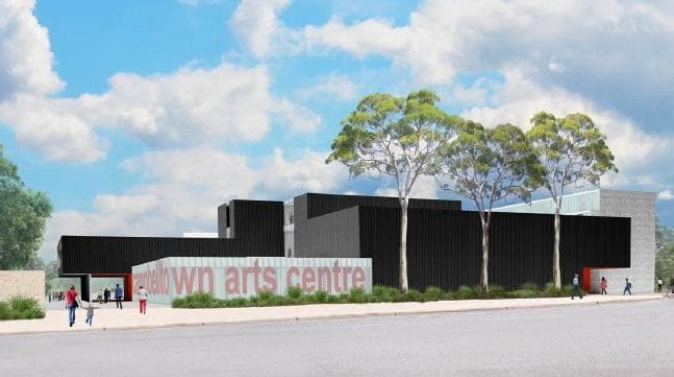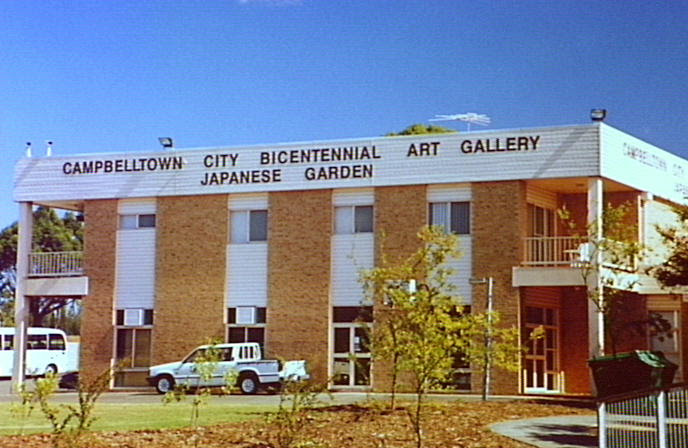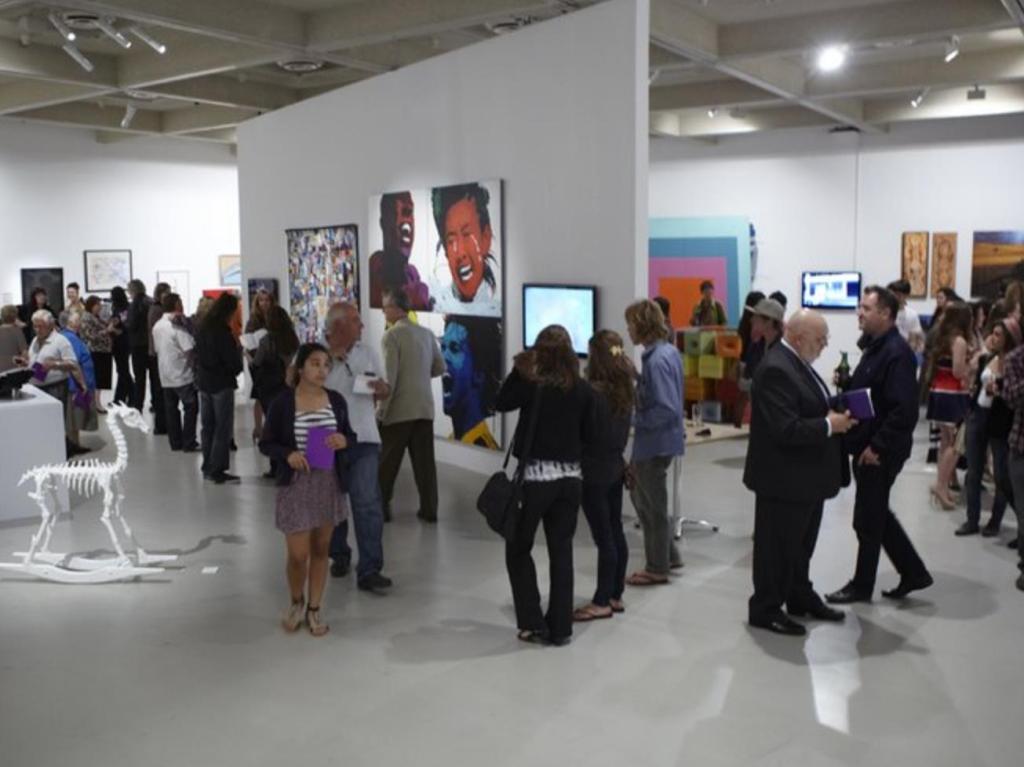Campbelltown Art Centre is well supported by its local community, the arts community and enjoys an international profile; supplied
Not quite a regional gallery, and far from being located in Sydney’s pulsing heart, Campbelltown Art Centre (C-A-C) has created a niche identity that has not only sustained 30-years of programming, but has led through ballsy curatorial decisions and grass roots community engagement.
Established in 1988 as the Campbelltown Bicentennial Art Gallery, inaugural Director Sioux Garside said that apart from implementing strategic directions and developing budgets – which any new gallery has to do – she had a key priority, ‘to put Campbelltown on the map, both locally and as a professional focused regional gallery in the broader Sydney and NSW art networks.’
Big ambitions for a director who had no staff and was aided only by volunteers. ‘We had a purpose designed building but no collection, no ongoing foundation and no staff. I recall having $50,000 to operate the entire activities, so lobbying State government for matching funds for professional staff was essential,’ Garside told ArtsHub.
The first staffer Garside hired was an education officer, then a curator, then staffing for cultural development, and so it built. Interestingly, that educational priority has remained a core vision for C-A-C across its 30-year history.
Michael Hedger also saw education as the way to grow a gallery, over his five years (1999-2003). ‘Definitely the way to go is through the children,’ he said.
‘The gallery became valued more because we worked through the school children via excursions, workshops and visits to schools (Artists’ Roadshow) to teach them about art and what the gallery could do for them, and they then encouraged their parents to visit on weekends.’
Hedger said the greatest challenge was, ‘interference by those who thought they knew better than the staff how the gallery should be run.’ He added that the highlight was the development of the Sculpture Garden, which continues to be a destination today.

In 2005, a new name and custom building with a black box theatre ushered the next stage for C-A-C; supplied
Always pushing forward, TKD architects designed a new art center for Campbelltown, which opened in 2005 with a name change under the directorship of Lisa Havilah (now Director of Carriageworks). It encompassed several exhibition spaces, a 184-seat performance space, studio spaces, a residency apartment and café. But the gallery has again grown beyond capacity.
Current Director Michael Dagostino has been with the gallery seven years. Last year, he was vocal in growing the centre further, pitching the State Government’s NSW Arts and Cultural Funding for $50 million for redevelopment, a proposal supported by Campbelltown Council.
Plans include re-situating the entrance, a new 320-seat theatre, a larger cafe and additional galleries to show the now significant C-A-C Collection. Like many galleries today, a blended model for commercial opportunities is needed to ensure sustainability and community vibrancy.
He said: ‘All this is about the future of Campbelltown and the growth of the region.’

An artist’s impression of Campbelltown Arts Centre’s proposed new entrance.
Dagosinto said the greatest challenge today, is ‘being across everything and knowing when to let go.’
He added: ‘It is critical for institution to have a strong curatorial direction that is relevant to community and society. We see artists as truth tellers using a visual platform to talk about the “now”.’
How artists can shape a gallery, and a community
To celebrate C-A-C’s anniversary, its past four directors have each selected one significant artist who they believe had the greatest impact on the gallery and the community during their tenure.
The chosen artists are Candy Bowers, by current director Michael Dagostino; what, by Lisa Havilah – the director that shepherded the organisation through the building of its new gallery; Joan Brassil, by former director Michael Hedger, and Suzanne Archer was inaugural director Sioux Garside’s choice.
Dagostino made the point: ‘The work that we do is important as it comes from the artists that we work with and issues we explore.’
These four artists are presented alongside existing, and newly commissioned works, by artists from the region in the exhibition We are all connected to Campbelltown (one way or another), which is showing until14 October.
Dagostino said the exhibition ‘responds to the discourses of the past, present and future of the Campbelltown and Macarthur region…underscoring the significant role that C-A-C provides for artists and the community.’
He continued: ‘Did Candy choose me or did I choose her? Candy grew up in Campbelltown and we commissioned One the Bear, her latest theatre piece. Over the past three years, we had conversations on race, class, gender and power that placed her firmly in this exhibition. Also we thought it was great to have an artist from theatre creating within the visual arts frame, which goes to the core of C-A-C and our multi-disciplinary approach.’
Dagostino also named With Secrecy and Despatch – commemorated the 200th anniversary of the Appin Massacre; Another Day in Paradise the Bali works of Myuran Sukumaran, and Lisa Reihana’s first survey exhibition Cinemania, and premier of her Venice Biennale work Pursuit of Venus (infected), as defining the recent chapter of C-A-C.
Garside reminded that this journey with artists had come a long way in the thirty years. ‘Campbelltown was like a big country town with a grass roots community art society and active local arts and crafts. It needed to grow, aspire and innovate and in the process become more inclusive of diverse ethnic communities,’ she told ArtsHub.
To do that Garside involved artists of the calibre of John Peart, Roy Jackson, Elisabeth Cummings, Joan Brassil, David Fairbairn and Suzanne Archer – and cultural development officers Jim Croke, then Graham Kime both artists, as teachers, thinkers and inspirers to collaborate with me on innovative community projects, exhibitions and commissions.
She said that recognition for the gallery in those early days finally came via increasing financial support from Council, through hundreds of school visits and community projects.

A responsibility for creating vision
Over its history, C-A-C has built a reputation for commissioning new work. It is testament to how a gallery at the city edges can play just as competitively as the majors, and make an international impact through astute connections and programming.
Garside said: ‘A collection creates a special cultural identity for a gallery that can posit questions, promote, educate and involve the community. I quickly set about building one. Commissioning work from local emerging artists was a good way.’
Hedger added: ‘Regional galleries exist to bring to the community exhibitions that they would not otherwise see and to show and collect the best art of the region. If you only show the people what they already know, they will not develop their arts appreciation and they will be bored quickly. Set your bar high and bring them up to it.’
Hedger feels that the future is secure because C-A-C’s audience has been nurtured into a kind of top-drawer engagement. ‘They like to be challenged and the gallery will continue to show cutting edge works, which are being created by younger artists from there.
He added: ‘Blending of art and performance works is also something that is unique to Campbelltown and is envied by other regional galleries.’
It is dangerous, however, for any arts venue to sit back on its laurels and well-built foundations. Ideas and engagement move so quickly in our society today, and art centres, theatres and galleries are ever more important to offer a place to digest, understand and belong.
Dagostino concluded: ‘I see the future as now. We will continue be relevant to our community and society with an artistic program that keeps telling truths and amplifying voices that need to be heard resonating across Campbelltown and the world.’
We are all connected to Campbelltown (one way or another)
Campbelltown Arts Centre
11 August – 14 October 2018
Artists: Candy Bowers, what, Joan Brassi, Suzanne Archer, Joel Beers, Blak Douglas, Heath Franco, Freya Jobbins, Anna McMahon, Danie Mellor, Claudia Nicholson, Ramesh Mario Nithiyendran and Shireen Taweel.





